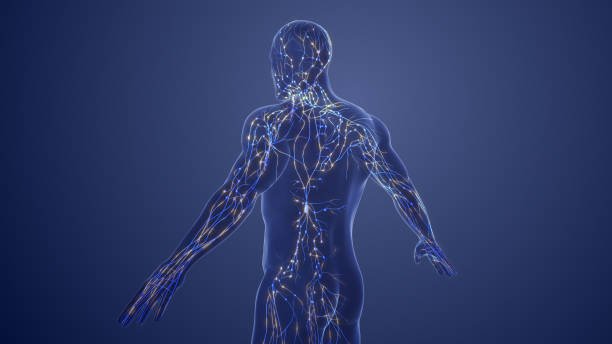
What are the Early Symptoms and Signs of Lymphoma? Detailed Explanation of 6 Major Symptoms and Causes of Lymphoma
I have a swelling on my neck. If I touch it and think it’s a pimple, don’t I think it’s okay? It may be more serious than imagined, and it may be related to the lymphatic system, which means you may suffer from lymphoma! Lymphoma usually results from metastasis from other sites. What are the early symptoms of lymphoma? What are the signs? Among the types of lymphoma, there are Hodgkin’s lymphoma and non-Hodgkin’s lymphoma. What are the differences between the two? In this article, we explain to you the lymphatic system, the causes of lymphoma, and the 6 major symptoms of lymphoma.
Learn about the lymphatic system
The lymphatic system (Lymph) is an important part of human immunity. Many organs are protected by the lymphatic system and fight against infections and germs.
The lymphatic system can be divided into three parts: lymphatic vessels, lymph nodes and lymphocytes. Lymph will flow in lymphatic vessels and bring pathogens back to the lymph nodes for filtration. At this time, an immune response such as inflammation or swelling of the lymph nodes may occur, but after the pathogens are cleared, the lymph nodes usually subside.
What is lymphoma?
The most obvious sign of lymphoma is swollen lymph nodes, which may be caused by cancer cells metastasizing from elsewhere, or the lymph nodes themselves becoming cancerous. Malignant tumors formed by lymph node cancer can also be called lymphoma and are divided into the following two types:
- Hodgkin’s lymphoma
- Non-Hodgkin lymphoma
Non-Hodgkin’s lymphoma can be subdivided into the following three types:
- B cell lymphoma
- T cell lymphoma
- NK cell lymphoma

What is the difference between Hodgkin’s and non-Hodgkin’s lymphoma?
Clinically, doctors will use biopsy to check whether there is Lite in the pathological tissue. Reed-Sternberg Cell (RS cell for short) to determine the type of lymphoma. If the patient’s specimen has RS cells, it belongs to Hodgkin’s lymphoma.
Hodgkin’s lymphoma is more likely to form in the neck, chest or armpits, and the patients are younger, about 30 years old. The prognosis is generally good, but the number of patients is small. Non-Hodgkin’s lymphoma is not fixed. Location, patients are older, most are over 60 years old, and the prognosis depends on the degree of malignancy.
Early symptoms and signs of lymphoma
In other words, swollen lymph nodes are one of the symptoms of lymphoma. In the early stages of lymphoma, patients may experience swollen lymph glands in the head and neck, armpits, or groin; these lymph nodes are usually painless and not red or swollen. If they are red, swollen, or hot, it is usually due to inflammation of the lymph glands.
Enlarged lymph nodes in the neck, groin, and armpits can be discovered through palpation and self-examination, but patients may also ignore them because the enlargement is too small. If the enlarged lymph nodes are inside the body and cannot be detected by palpation, they will need to undergo an in-depth examination.

6 major symptoms of lymphoma
Depending on the location of lymphoma formation, patients may also experience different symptoms. For example, brain lymphoma may affect memory and thinking ability; abdominal lymphoma may cause edema or ascites in the lower body; skin lymphoma may cause redness, itching, plaques, or Nodules; nasal lymphoma has symptoms such as nasal congestion and fever.
The six common symptoms of lymphoma are as follows:
- Ever
- Skin rashes and itchiness
- Weight loss
- Night sweats
- Cough
- Difficulty or rapid breathing
Readers can use the six words “burning, swelling, itching, weight loss, sweating, coughing” together with self-palpation to make a simple judgment. If you find obvious swelling in the neck, groin, or armpits, or if the symptoms are very similar to the above, it is recommended to seek medical treatment as soon as possible.
Why do you get lymphoma? Lymphoma causes explained
Like most cancers, lymphoma cannot be attributed to a single cause, but certain groups of people or long-term exposure to certain substances may have a higher cancer risk than the general population:
- HIV patients
- People infected with human T-lymphotropic virus type 1 and type 2
- People infected with human herpesvirus 4 (HHV-4), also known as Epstein-Barr virus
- People infected with Helicobacter pylori
- Patients with immunodeficiency or long-term use of immunosuppressants
- People who have been exposed to chemicals for a long time












